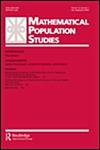社会科学中的大数据方法
IF 1.3
3区 社会学
Q3 DEMOGRAPHY
引用次数: 1
摘要
数字技术和社交网络的传播使可用于社会研究的数字数据形式成倍增加。主要的两种形式是在社交网络、搜索引擎或博客中产生的原生数字数据,以及数字化数据,即转换为数字的模拟数据(Rogers,2013)。大数据最初是在互联网上产生的。它们允许在不干扰个人的情况下分析行为(Webb等人,1966)。一个例子是网络平台分析中使用的数据,如Google Correlate,其目的是揭示与通过Google搜索引擎搜索的关键词相关联的共同出现。早在美国疾病控制和预防中心(Ginsberg et al.,2009)之前,这一工具就有助于预测美国的流感疫情。这个例子表明,数字网络平台能够实现数据分析的创新。本地数字数据的另一个例子是自愿上传到社交网络、博客和网站上的数据。这些主要是文本或视觉(图像和视频),通常是非结构化的。第三个例子是事务数据和物联网。通过数字设备进行的交易,如智能手机、扫描仪、平板电脑和带芯片的卡(信用卡、购物卡),产生具有某种结构的数据。这些数据包括与交易相关联的元数据(日期、时间、持续时间或支出)。连接到互联网(物联网)的对象,如用于健康监测、房屋自动化和驾驶辅助的传感器,通常会产生结构化数据,这些数据可以进行组织和分析。数字化数据以前以模拟形式存在,例如图像、视频,以及上传到网络上的扫描或数字拍摄文件,例如博物馆藏品或在线图书馆。数字人文学科已经将这些材料转化为数字形式。另一个例子是由计算机辅助的调查,将数据插入数字数据库。现在,网络调查是通过互联网(通过电子邮件)进行的(Amaturo和Aragona,2016),可以用小预算接触到大样本。本文章由计算机程序翻译,如有差异,请以英文原文为准。
Methods for big data in social sciences
The diffusion of digital technologies and social networks has multiplied the forms of digital data that can be employed for social research. The main two forms are native digital data, which are produced in social networks, search engines, or blogging, and digitized data, which are analog data transformed into digital (Rogers, 2013). Big data are originally produced in the Internet. They allow for analyzing behaviors without interfering with individuals (Webb et al., 1966). An example is the data used in web platforms analytics, such as Google Correlate, whose purpose is to reveal the co-occurrences associated with a keyword searched through the Google search engine. This tool helped to predict the flu epidemic in the US, well before the US Centre for Disease Control and Prevention (Ginsberg et al., 2009). This example demonstrates that digital web platforms enable innovations in data analysis. Another example of native digital data is the data voluntarily uploaded on social networks, blogs, and websites. These are mainly textual or visual (images and videos), often unstructured. A third example is transactional data and the Internet of things. Transactions made through digital devices, such as smart-phones, scanners, tablets, and cards with chips (credit cards, shopping cards) produce data with some structure. These data comprise metadata (date, time, duration, or expenditures) associated with transactions. The objects connected to the Internet (the Internet of things), such as sensors for health monitoring, house automation, and driving aid, usually produce structured data, which can be organized and analyzed. Digitized data previously existed in analog form, for example images, videos, and scanned or digitally photographed documents uploaded on the web, such as museum collections or libraries available on-line. Digital humanities have converted this material into digital form. Another example is the surveys assisted by computers, where the data are inserted into digital databases. Web surveys now are conducted through the Internet (by e-mail) (Amaturo and Aragona, 2016), and allow for reaching a large sample with a small budget.
求助全文
通过发布文献求助,成功后即可免费获取论文全文。
去求助
来源期刊

Mathematical Population Studies
数学-数学跨学科应用
CiteScore
3.20
自引率
11.10%
发文量
7
审稿时长
>12 weeks
期刊介绍:
Mathematical Population Studies publishes carefully selected research papers in the mathematical and statistical study of populations. The journal is strongly interdisciplinary and invites contributions by mathematicians, demographers, (bio)statisticians, sociologists, economists, biologists, epidemiologists, actuaries, geographers, and others who are interested in the mathematical formulation of population-related questions.
The scope covers both theoretical and empirical work. Manuscripts should be sent to Manuscript central for review. The editor-in-chief has final say on the suitability for publication.
 求助内容:
求助内容: 应助结果提醒方式:
应助结果提醒方式:


